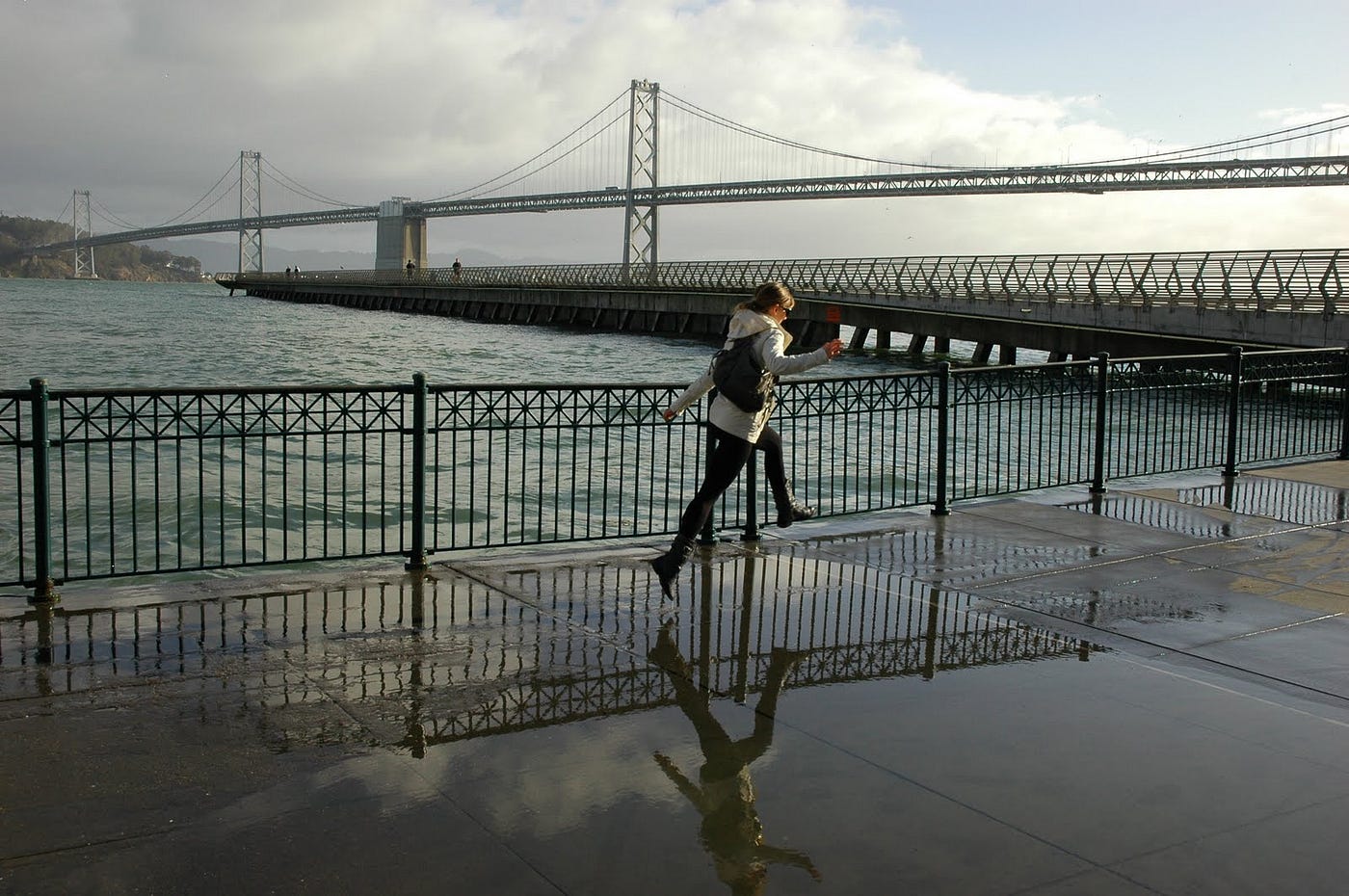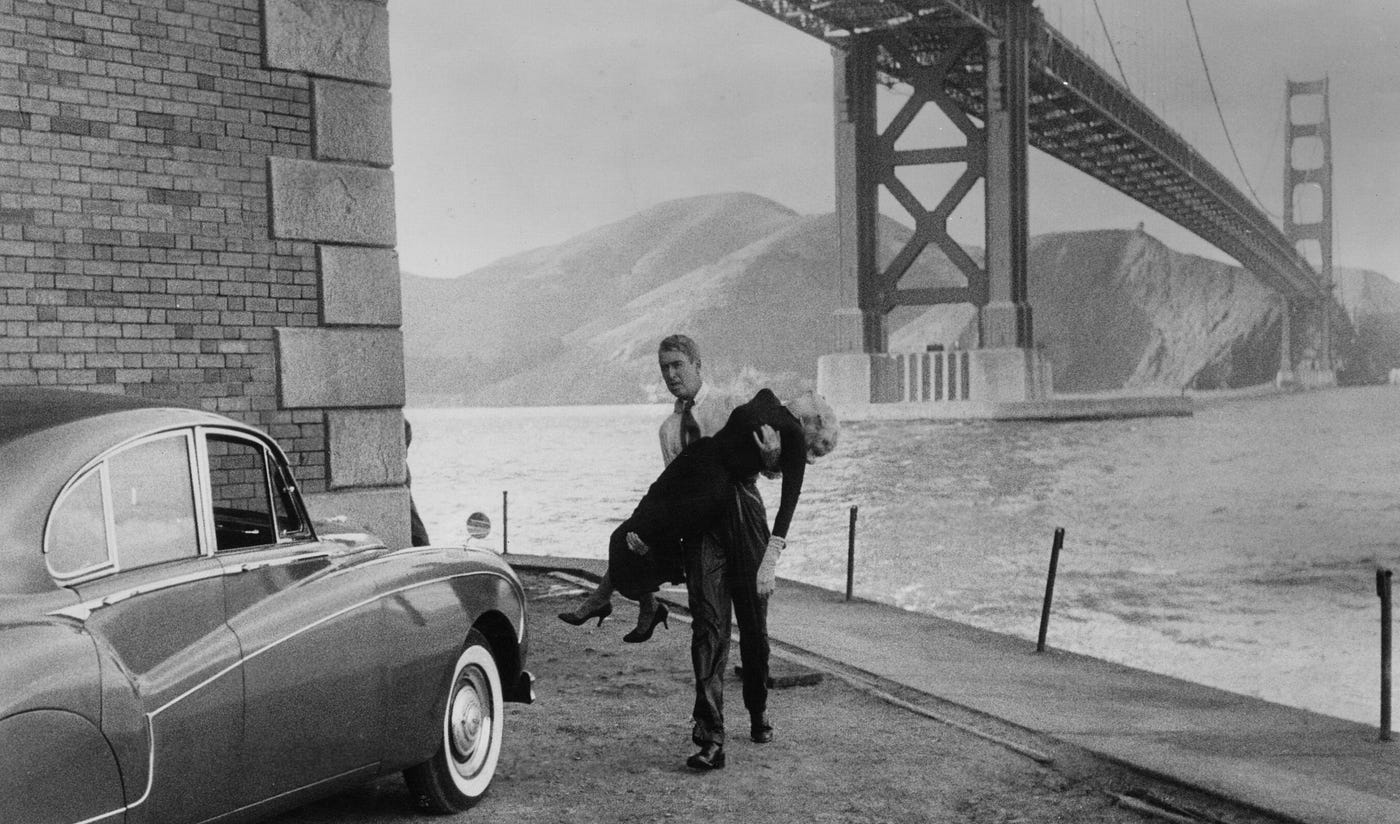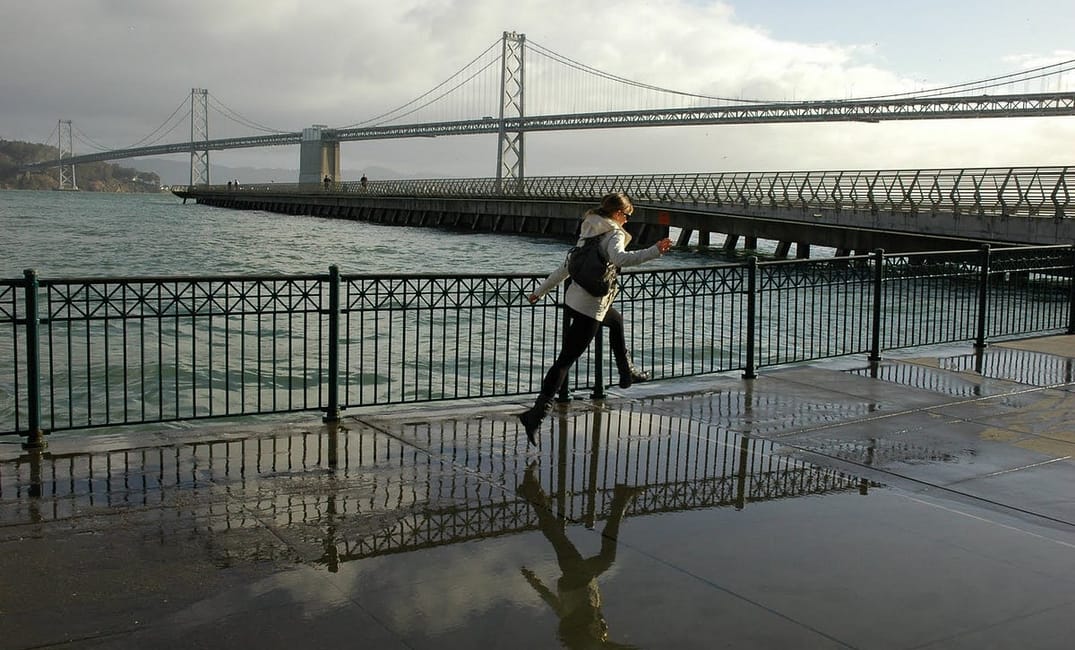The president-elect’s genitals and Carly Fiorina’s face got more press attention this year than the fact that climate change is killing 1,000 children across the globe every day. Locally, the sea level in the Bay Area is projected to rise between three and four feet before the end of the century.
Without a lot of work and political will in the coming decades, the rising bay could reshape San Francisco, returning some of its low land back to the bay.

San Francisco hasn’t always been seven miles by seven miles.
Until the gold rush, North Beach was an actual beach, and much of the Financial District and Embarcadero were underwater. The corner of Taylor and Francisco, just behind Kennedy’s Irish Pub on Columbus Avenue, was wet. Telegraph Hill stood almost as an island, surrounded on three sides by the bay.
The material to dredge and widen the city came initially from abandoned ships — sunken, smashed and piled up, their crews long since gone to the Sierras to find gold or Shanghaied and dragged back west.
The current location of the Transamerica Pyramid was once a beach where the Niantic, a whaling ship, came aground in 1849.
Alongside nearly 200 nations, President Obama recently signed the Paris Agreement, thereby committing to reduce greenhouse-gas emissions. Unfortunately, our new president believes that climate change is a hoax that was perpetuated by the Chinese government and has already stated that he wants to leave the historic accord.
According to the United States Geological Survey, global warming and expanding seas could cause the waters beneath the Golden Gate Bridge to rise by up to four feet by 2100. That spot in Vertigo where James Stewart saves Kim Novak from falling into the bay? They’d already be up to their knees in water.

An even more aggressive projection comes via the San Francisco Public Utilities Commission, who predicts that in the next 100 years, water levels in the bay could rise by as much as eight feet.
Basically, the bay is rising almost as quickly as the Millennium Tower is sinking.

So which areas are at most risk? According to an excellent recent report from the San Francisco Chronicle, a rise of 36 inches would mean water flooding into the Ferry Building twice daily at high tide, and the toll booths of the Bay Bridge becoming flooded during rainstorms. Mission Bay, the Marina and the Embarcadero are, as you would expect, at risk.
If you want to get really scared, view this map from Urban Life Signs, which projects a hypothetical 25-foot change.

Beyond experiencing a sea-level rise, the city is going to heat up.
A recent study by Stanford University’s Carnegie Institution of Science projected that if climate change continues at the current rate, San Francisco’s temperature will match San Diego’s in 100 years. The famously cold summers will be a thing of the past. Beer-garden benches won’t come with complimentary blankets. The fog line that now sits around Masonic Avenue will presumably move out to the ocean, shedding more sun on the misty avenues. God forbid that Karl the Fog go the way of many Mission hipsters and move to Portland.
The 1991 Oakland Hills Firestorm showed that wildfires are already possible close to the bay and that they will likely become more of a threat as the region heats up.
So beyond slowing the temperature rise through human behavior and politics, how will we cope with these changes?
Like so many coastal American cities, San Francisco has long known that it must deal with this threat, and there are several steps already in place to get out ahead of the flood.
In 2011 the Bay Conservation and Development Commission amended its guiding document to incorporate climate-change concerns. They are now more focused on protecting the cities from the bay, not the other way around. Reclaiming tidal marsh land is a way of both creating ecological benefits and providing a buffer against the extremes of sea-level rise.
Planning for seawalls and flood barriers is underway. The new condo and retail development at Candlestick Park will sit 10 feet above the 49ers’ old home, staving off the rising tides for a century or more. Developments at AT&T Park and Potrero Hill are taking similar precautions, while some experts have advised the avoidance of any seafront development.
Other waterfront developments on Treasure Island and in the Dogpatch are being designed to cope with the most extreme water-rise projections up to the year 2100.
It has also been suggested that some areas, like the southern reaches of Ocean Beach, may simply be allowed to be reclaimed by the ocean.
Other cities around the bay are at even more risk than San Francisco. Low-lying areas such as the Oakland Airport and East Palo Alto will also need to deal with this impending challenge.
The threat is escalating. In the 20th century, the sea rose by about eight inches. The sea-level rise in the 21st century is expected to beat that of the 20th century four times over, most of which is projected to occur after 2050.
We have around half a century to hold back the bay. That isn’t long, especially in the face of widespread denial. Trump is rumored to be positioning Myron Ebell as head of the EPA. Ebell is a climate-change denier who once argued that increased temperatures caused by global warming would “make colder regions more comfortable to live in,” and said that in regions already known for warm weather, “The higher temperatures are killing people who are likely to die soon anyway.”
He’s slated to be the possible head of the Environmental Protection Agency. That’s like hiring Bill Cosby as a mixologist at a bachelorette party.
Fortunately, most of the world does care and is fighting for the planet. The new Popemobile even runs on biodiesel. In the US, public concern for the issue is at an eight-year high, and there are many brilliant people, charities (see below) and local entities already developing solutions to both the global issue and finding ways to protect the cities in which we live.
Hopefully, the buried boats under the Embarcadero are not doomed to be in the bay once more.
Here’s a great list of climate-change charities in Mother Jones.







